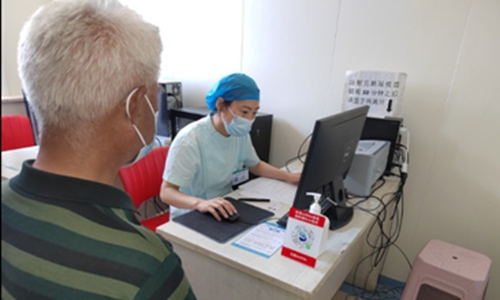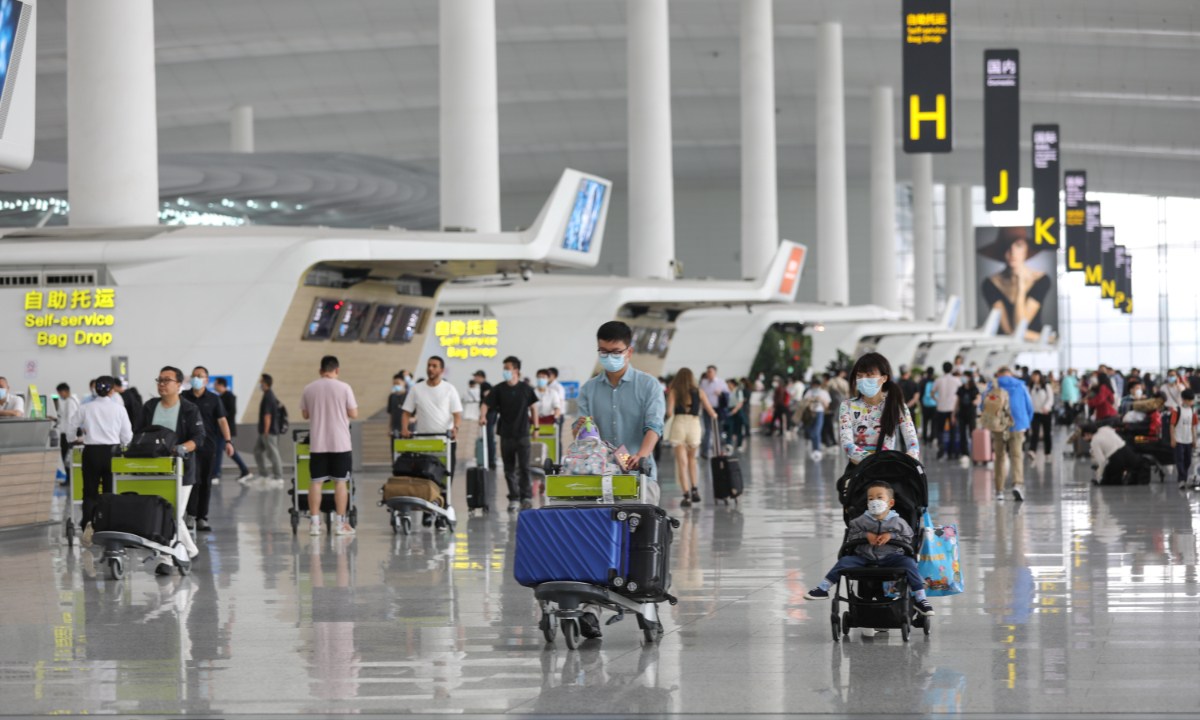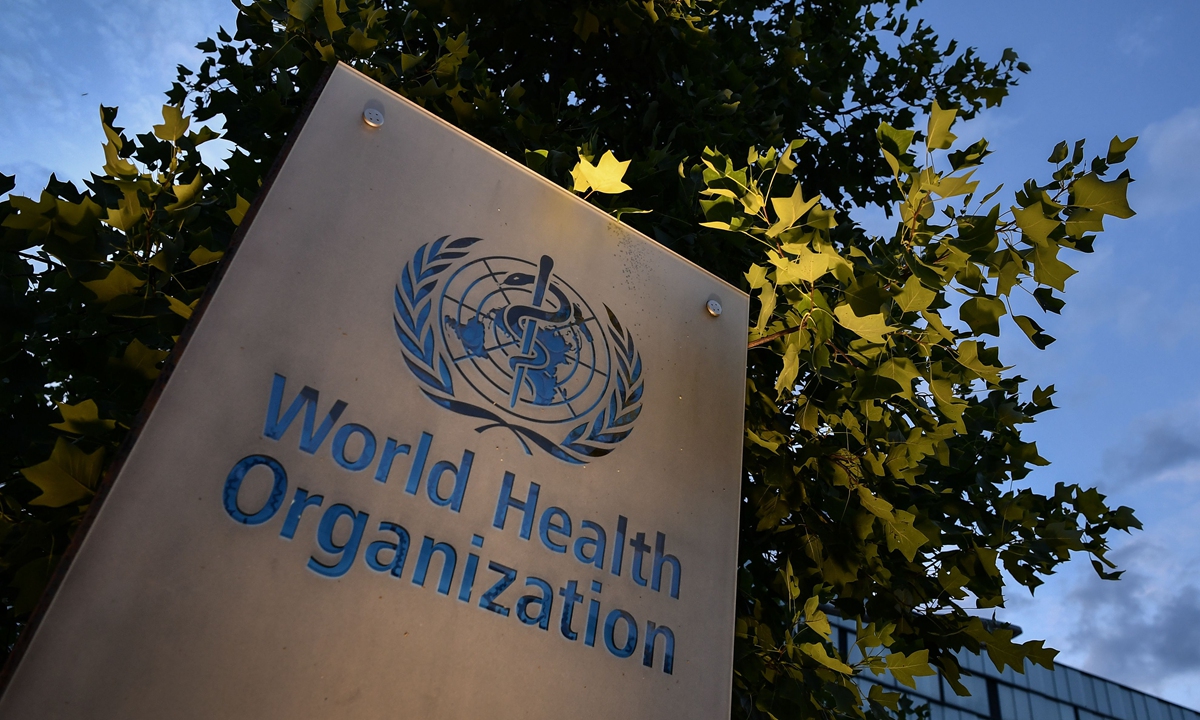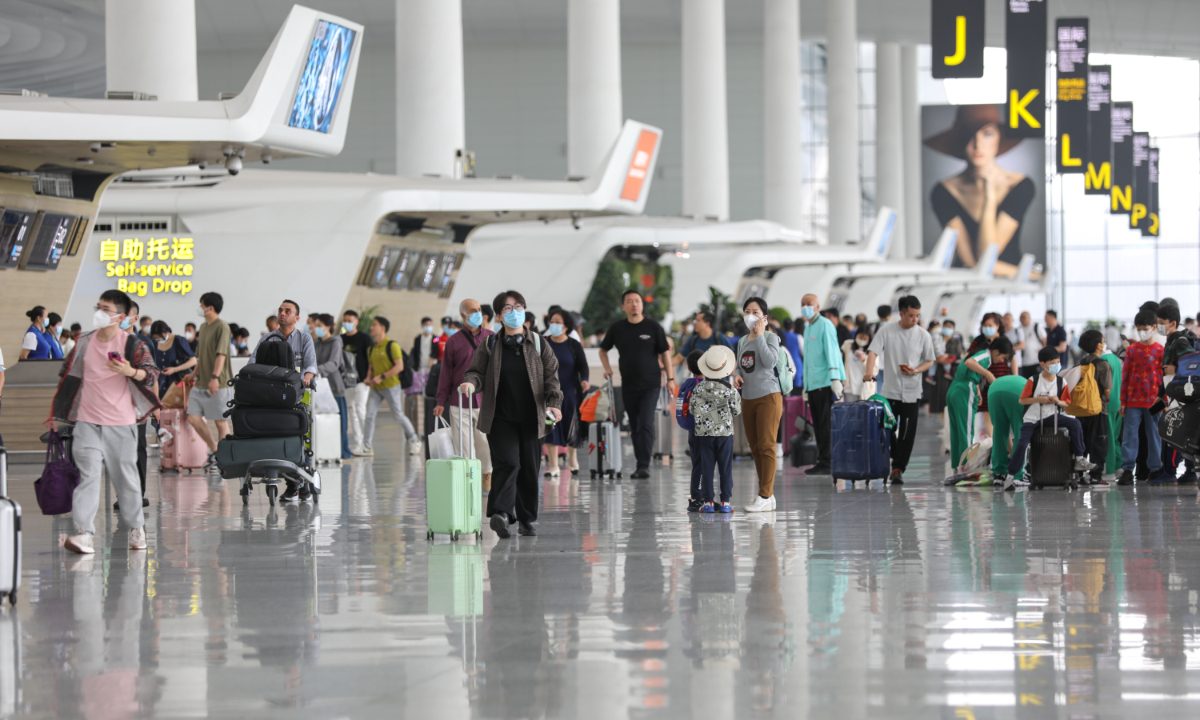
A man registers his information to get China's first domestic mRNA vaccine for COVID-19 in Shijiazhuang, North China's Hebei Province, where the vaccine was initially put into use on May 14, 2023. Photo: Hebei Daily
China's first domestically developed mRNA vaccine for COVID-19 was initially put into use in Shijiazhuang, North China's Hebei Province on Sunday.
Citizens can get their mRNA vaccines developed by local drug maker CSPC Pharmaceutical Group at the city's Taoyuan community healthcare center.
According to China's recent COVID-19 vaccination plan, the Central Leading Group for Novel Coronavirus Prevention and Control on April 6 recommended CSPC's mRNA vaccine and the protein subunit vaccine called SCTV01E, which was developed by Sino Cell Tech to be used as a booster as the two vaccines cover the Omicron variants.
Approved for an emergency use by the National Medical Products Administration on March 22, CSPC said its mRNA vaccine has a good cross-protection effect against the Omicron variants. Sino Cell on Saturday announced the final results of the phase III clinical trial of SCTV01E, saying that it has shown good protective efficacy against Omicron and its sub-strains.
Meanwhile, an increasing number of Chinese netizens are saying online that they were infected with COVID-19 for a second time in recent days.
On China's Twitter-like social media platform Sina Weibo, some people posted photos of their positive results of COVID-19 rapid antigen tests, saying that they still have stuffy noses and coughs, and cannot taste things after getting infected for a second time, but the symptoms are milder than the first-time infection.
Zhuang Shilihe, a Guangzhou-based medical expert, suggested Chinese people take vaccines, which contain Omicron antigen and are available in China, as booster shots, including Sino Cell's SCTV01E, CSPC's mRNA vaccine, an mRNA vaccine co-developed by German-based BioNTech and China's Fosun Pharma, and Moderna's bivalent vaccine.
"Whether they received two or three doses in the past, people could now start receiving the fourth dose. If people took the inactivated vaccine as their previous shots, the fourth shot must not be an inactivated vaccine but one from a different technology," Zeng Guang, the former chief epidemiologist from the Chinese Center for Disease Control and Prevention, said in December.
According to the China CDC, the Omicron variants have become the main strains in China. In late April, the XBB series of Omicron variants accounted for 97.5 percent of cases imported to China and 74.4 percent among China's locally transmitted infections.
There was a small increase of the epidemic in some areas in the past May Day holidays, but we didn't see a significant increase in the number of serious cases in hospitals across the country, said an official from the National Administration of Disease Prevention and Control at a press conference on May 8.
The official said the number of places having a cluster infection may increase after the holidays, but a regional scale outbreak is not very possible.
Wang Guangfa, a respiratory expert from Peking University First Hospital, told the Global Times in April that after a while, the number of people re-infected with the coronavirus will keep going up, but it will eventually go down. Wang predicted a larger wave may come this winter, as the weather becomes colder and most people's immunity fades away.
Considering the high-risk groups may get infected for a second time within six months after their first infection, the plan shortens the interval between shots from six months to three months, targeting people who haven't finished all their shots.
Global Times



